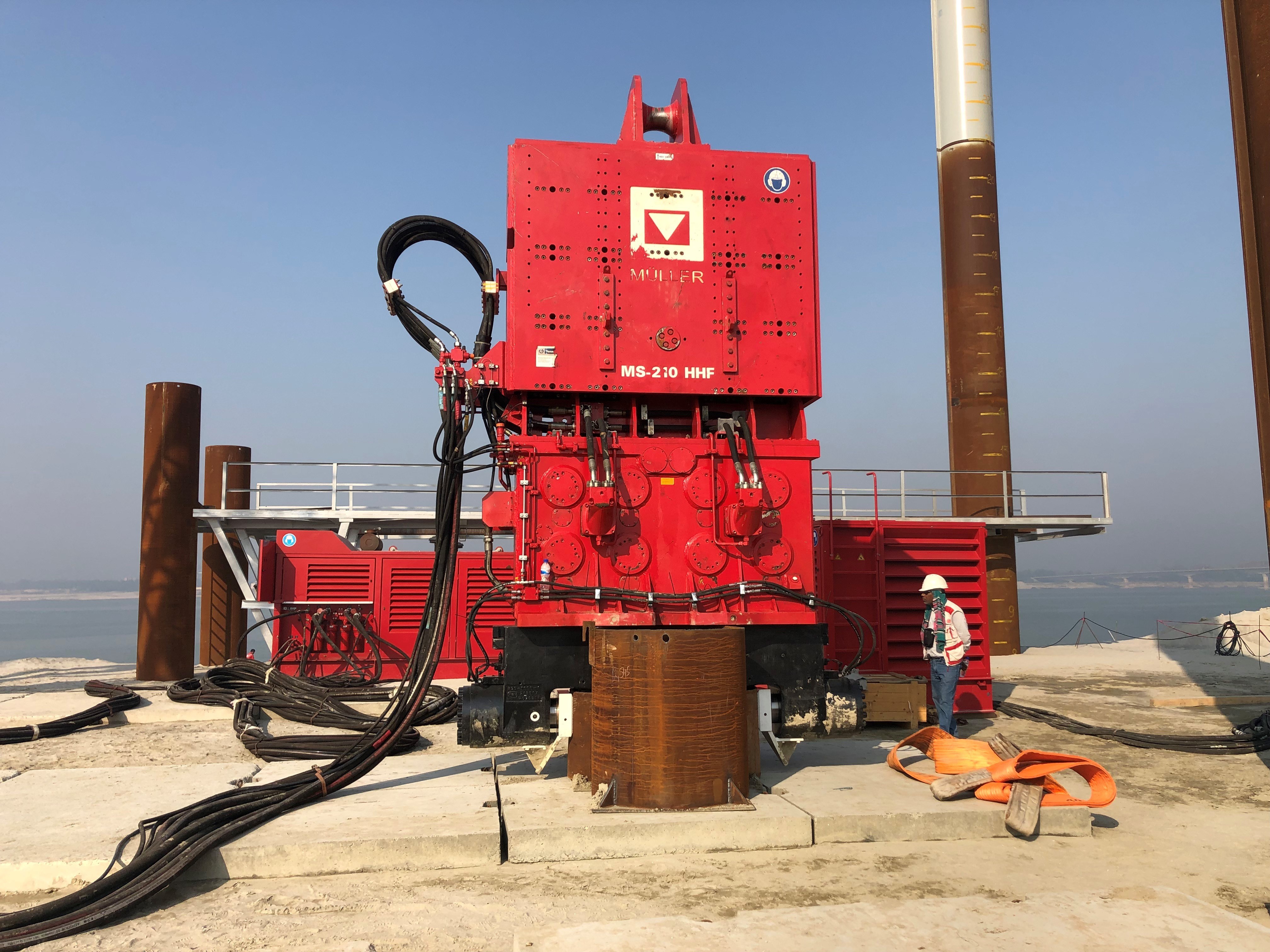FOUNDATION FOR FIRST NUCLEAR POWER PLANT IN BANGLADESH.
In Ruppur, located about 180 kilometres west of the capital Dhaka, the first national nuclear power plant is to ensure the energy supply in Bangladesh from the end of 2023. In Ruppur, located about 180 kilometres west of the capital Dhaka, the first national nuclear power plant is to ensure Bangladesh's energy supply from 2023. The main reason for choosing Ruppur is its location on the Padma River, which will supply the cooling water for the planned power plant. As the river land is an alluvial plain, a company had to be found that had extensive experience in drilling in sand and could provide the appropriate vibrators. With a total of three vibratory units and over 2,600 tonnes of ASF anchor piles with a diameter of 64 cm and a thickness of 90 millimetres, terra infrastructure made a significant contribution to ensuring that the foundation could be built.
The vibrators were a MÜLLER MS-50 H3, driven by an MS-A420 V unit, and a MÜLLER MS-100 HHF vibrator, driven by an MS-700 V unit, for inserting the pipes with a length of 17 metres and diameters of 630 and 1,020 millimetres. To get the even larger pipes, up to 38 metres long and with a diameter of 1,420 millimetres, into the hard-to-penetrate subsoil, an even more powerful vibrator was needed.
Sand is one of the most difficult soils of all. Therefore, only the MÜLLER MS 210 HHF and MS-240 HHF driven by MS-A 1050 V and MS-A 1150 V units came into question for the large pipes. The vibrators are among the most powerful in the industry. In addition to commissioning the vibrators on site, terra infrastructure provided technical advice throughout the project.
An important project step was, among other things, the design for the anchoring of the terra ASF micropiles. Here, the technical office did a great job and designed a special solution.
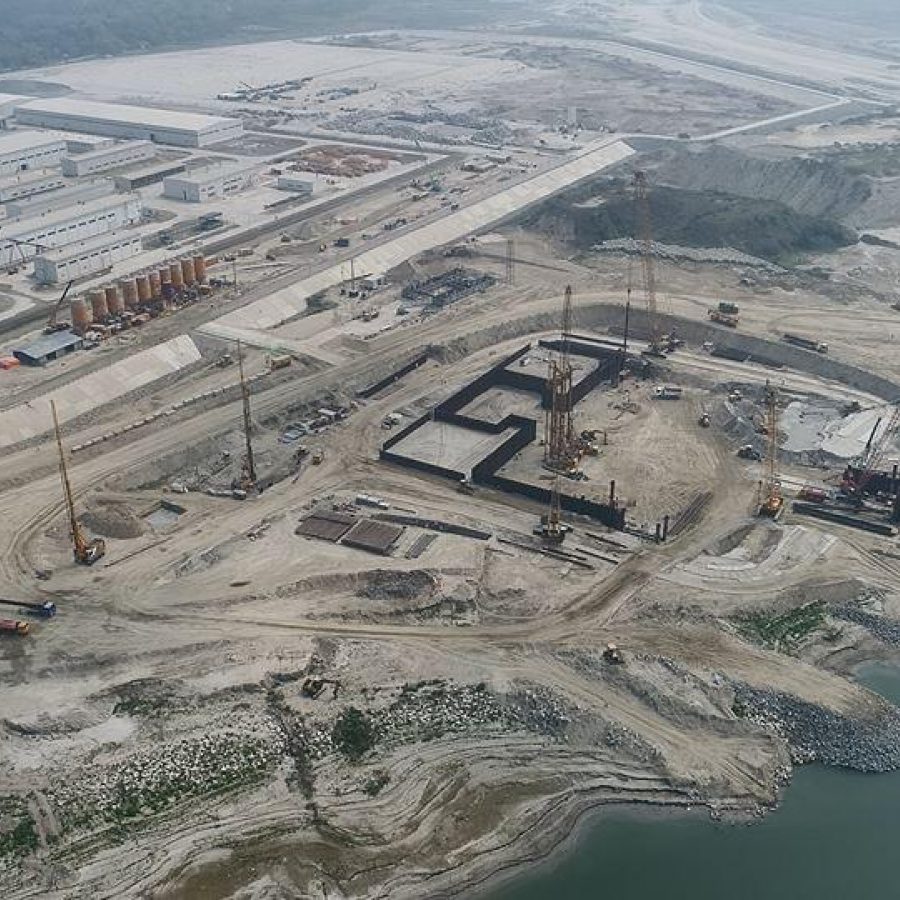
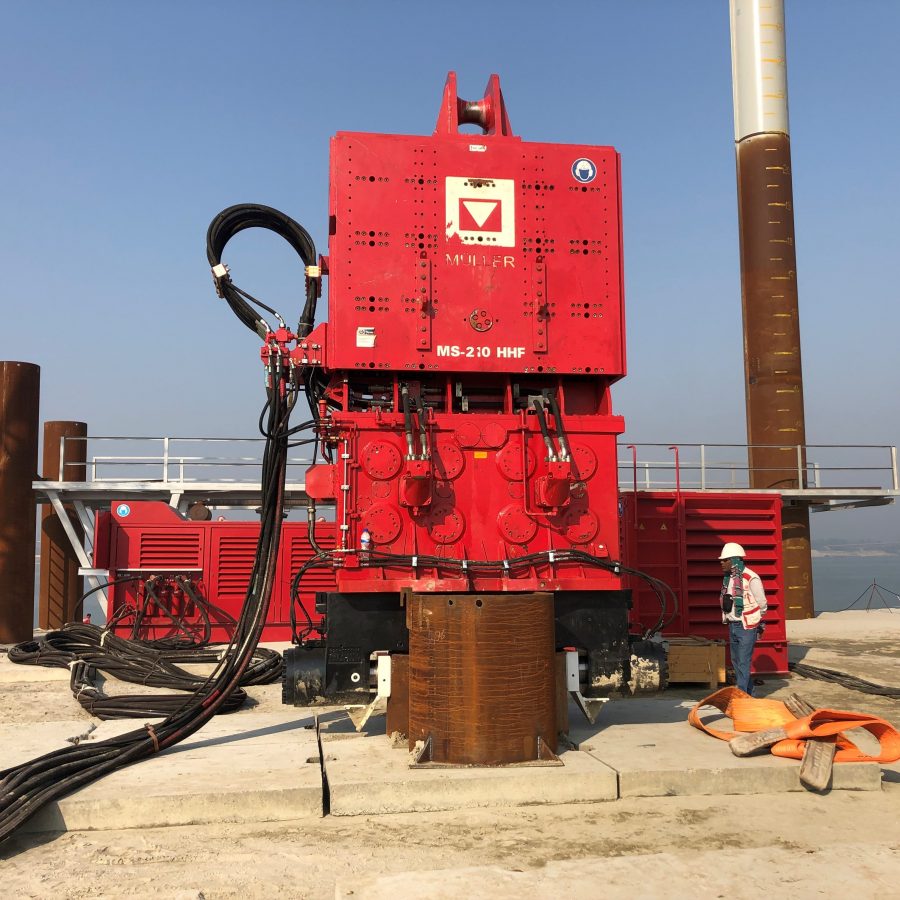
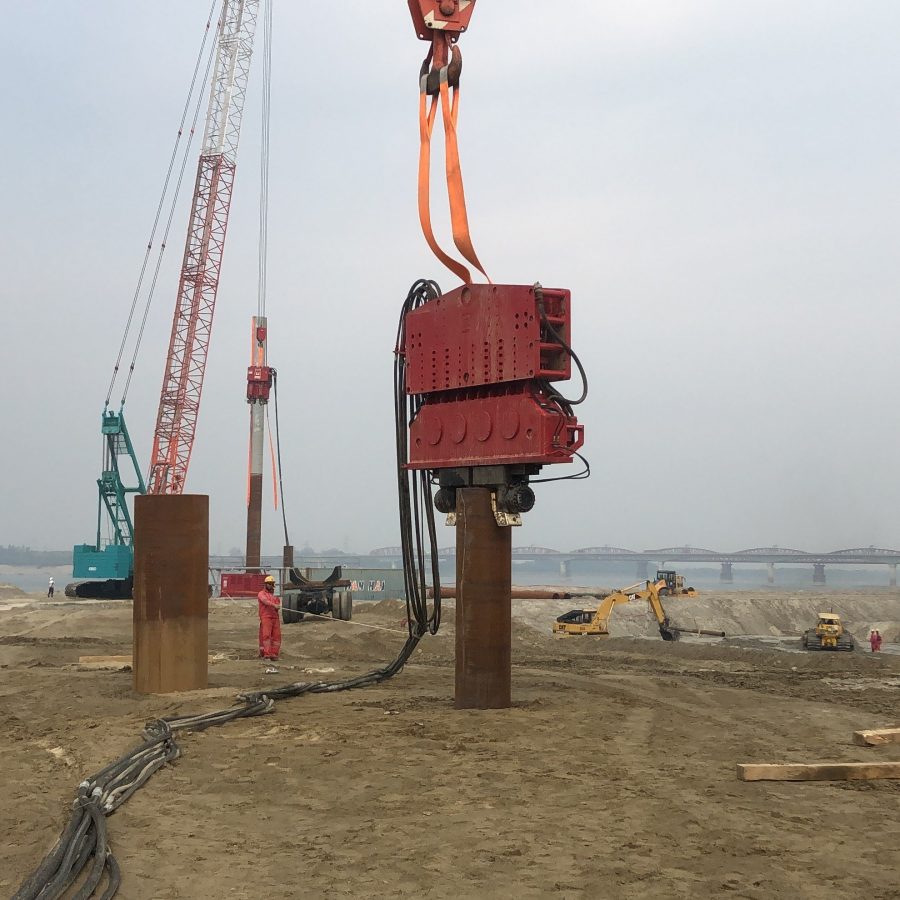
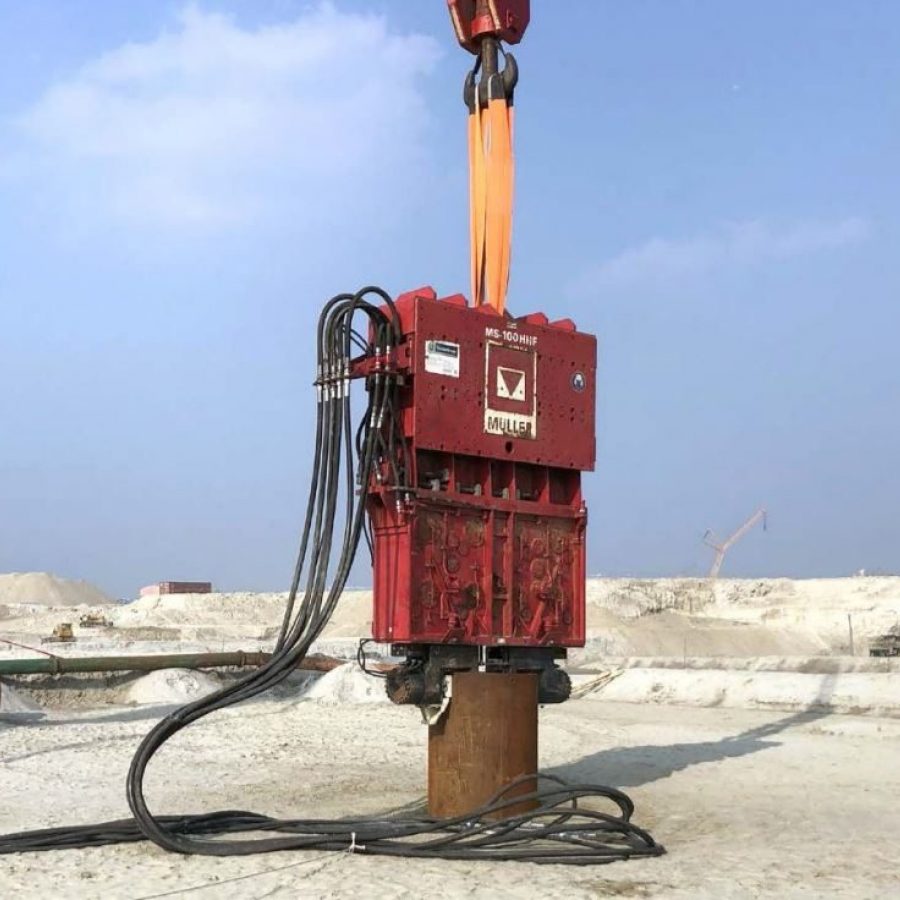
Data & Facts
you might also be interested in
-
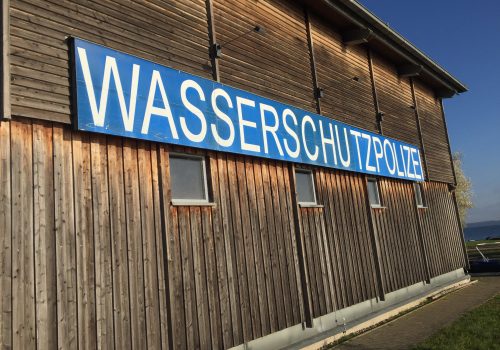
Pile Driving in Schwerin
Extensive construction work was carried out on the grounds of the Schwerin Water Police Station on the Swan Peninsula to extend the breakwater.
To the post -
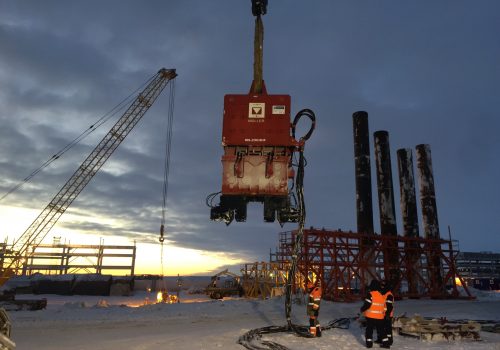
Pile Driving in Permafrost
The absolute advantage of our equipment under permafrost conditions: terra machines did not require any preheating, as they were already designed for the extreme conditions ex works.
To the post -
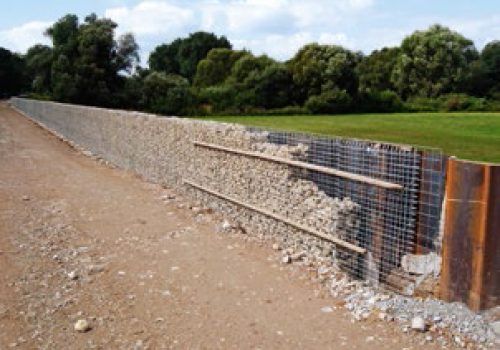
Dike Retrofitting in Michelau
In total, a flood line of about 1,500 meters was created. The above-ground part was clad by the executing contractor with a lattice wall containing a filling of limestones.
To the post
